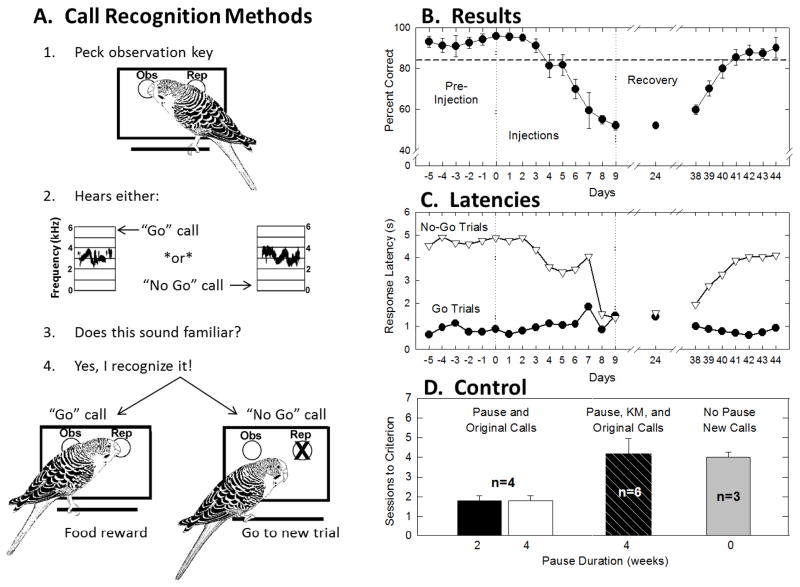Figure 4.
(A) Cartoon describing operant conditioning paradigm used for behavioral training during call recognition task. (B) Average percent correct responses of six budgerigars on a Go/No-Go recognition task involving two contact calls before, during and after treatment with kanamycin. Four weeks following the end of treatment, recognition performance returns to pre-injection levels after 4 days of testing. Error bars represent standard errors. (C) The average response latencies to both “go” and “no-go” stimuli for the six budgerigars before, during and after kanamycin treatment. (D) Summary of number of trials to reach criterion in the kanamycin experiment and various control experiments indicating that kanamycin treatment renders previously familiar calls unrecognizable. Error bars represent standard errors. (revised from Dooling et al 2008)

